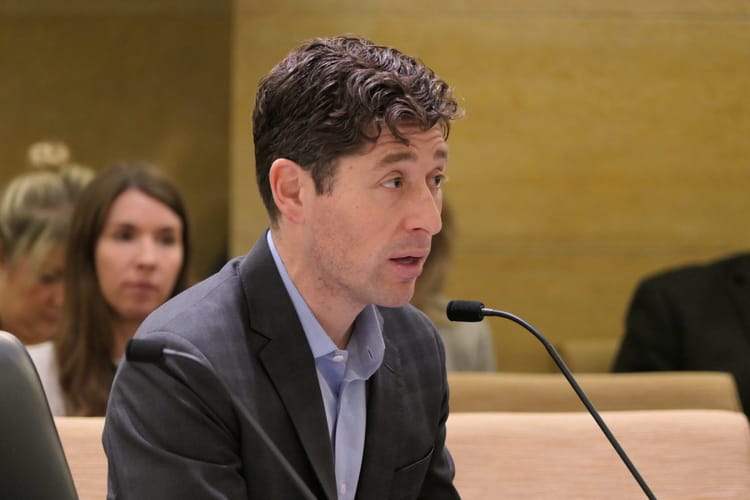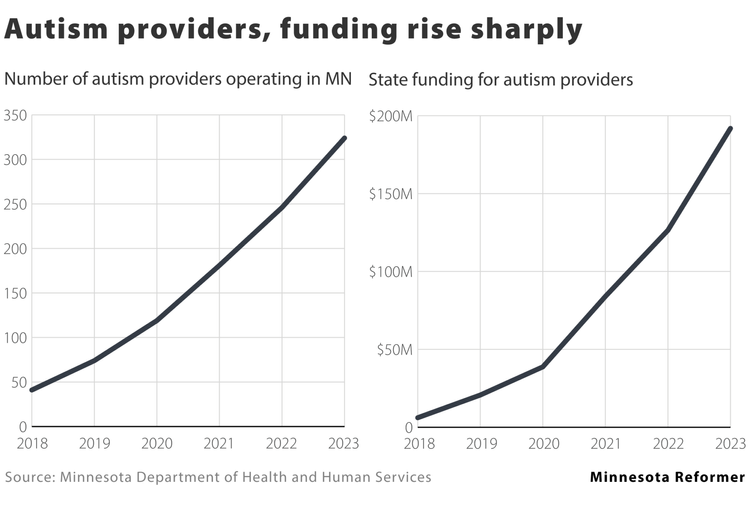What’s in Minnesota’s 2023 tax bill

By Michelle Griffith, Minnesota Reformer
The Legislature’s $3 billion tax bill was one of the 2023 session’s landmark pieces of legislation, with lawmakers approving rebate checks for over 2.5 million Minnesotans and distributing tax credits to impoverished families to help pay for child care and other necessities.
But within the bill there’s also $1 billion in tax increases, not including the new taxes tucked into other budget bills — like the metro-area sales tax increases for housing and transportation. Gov. Tim Walz signed the tax bill into law, and he commended lawmakers for using the state’s $17.5 billion surplus to further his goal of making Minnesota the best state in which to raise a family.
Here’s a breakdown of what the Legislature passed in this year’s tax bill:
Rebate checks for 2.5 million Minnesotans
Although they are much smaller than what Walz proposed, Minnesotans who lived in the state for at least part of 2021, filed a Minnesota tax return or property tax refund and are below a certain income threshold will receive a check.
Single taxpayers who made up to $75,000 will receive a $260 check; married joint filers who made up to $150,000 will receive a $520 check; and families with children within these income thresholds will receive an extra $260 per child up, with a maximum of three. There’s a hard ceiling on the payments, meaning Minnesotans who made $1 over the thresholds are ineligible for any cash.
The Department of Revenue said the rebate checks will be sent out in early fall. Residents who filed Minnesota tax returns and provided banking information will see the money deposited into their bank accounts. The Department of Revenue is working to create a website for Minnesotans to update their banking information if it’s recently changed.
A paper check will be sent to everyone else, using the address on their 2021 tax return.
Walz in an interview with MPR said he would have preferred the rebate checks to be higher, but said he compromised for other provisions in the bill, like the child tax credit.
Walz originally proposed $1,000 for individual filers and $2,000 for married joint filers, and Republican lawmakers said the smaller checks the Legislature ultimately passed were disappointing.
“Earlier this session, we had a ($17.5) billion surplus. Minnesotans were expecting that to go back into their pockets,” said Senate Minority Leader Mark Johnson, R-East Grand Forks, at a news conference marking the end of the session. “Minnesotans are really going to be bearing the cost of the policies coming forward.”
A child and working family tax credit
Despite the smaller rebate checks, lawmakers touted the tax bill’s aim to reduce childhood poverty rates. A recent estimate from Columbia University found that the Legislature’s child tax credit would reduce childhood poverty rates in Minnesota by one-third.
The tax bill includes a child tax credit and a working family credit, which is aimed at low-income families. The size of each depends on income.
The full child tax credit is $1,750 per child, which begins to phase out for married filers who make $35,000 annually and $29,500 for single taxpayers.
According to the Legislature’s nonpartisan staff, here are a few examples of the amounts and income phase outs for the child and working family tax credits:
Married parents with one child under 18:Maximum combined child and working family credit is $2,100. Minimum credit is $1,750.Begins to phase out at $35,000 of annual gross income, fully phased out at $52,500.Married parents with two children under 18:Maximum combined child and working family credit is $3,850. Minimum credit is $3,500. Begins to phase out at $35,000 annual gross income, fully phased out at $67,083.Single parent with one child under 18:Maximum combined child and working family credit is $2,100. Minimum credit is $1,750. Begins to phase out at $35,000 of annual gross income, fully phased out at $47,000.Single parent with two children under 18:Maximum combined child and working family credit is $3,850. Minimum credit is $3,500.Begins to phase out at $35,000 of annual gross income, fully phased out at $61,583.
Minnesota’s household median income is more than $77,000, which means the big working family and child tax credits — both phasing out well below the median — are an effort to redistribute wealth downward.
House Speaker Melissa Hortman, DFL-Brooklyn Park, said in an interview this merely counteracts an overall tax climate that hits lower income people harder.
“Part of having progressive taxation is making sure that people who can afford to pay more do pay more,” Hortman said. “But the way that our system is currently set up, the wealthiest pay a lower percent of their total income in taxes than middle class people.”
According to a 2021 Minnesota tax incidence study, the poorest 10% of Minnesota households pay a larger share of their income — about 25% — in state and local taxes compared to the wealthiest 10% of Minnesota households, who pay about 12% of their income in state and local taxes. Aside from those two outlying groups, Minnesota’s state and local tax system is mildly progressive, which contrasts with most states’ highly regressive systems.
Social Security income tax elimination for over 75% of Minnesotans
Over three-quarters of Minnesotans who receive Social Security benefits will now pay no state income tax on those benefits.
Couples with an annual income up to $100,000 would be exempt from state tax on Social Security benefits, with a phased-out exemption for married filers who make up to $140,000.
Republicans and some Democrats all session pushed for a full Social Security tax exemption; multiple Democrats last year campaigned on it, but the plan calls for the wealthiest Minnesotans to keep paying state tax on their benefits.
The tax bill was more than just tax cuts and rebates, however. Lawmakers passed a so-called global intangible low-taxed income tax — or GILTI — on businesses with global earnings. This matches a federal tax provision and is estimated to generate over $435 million in fiscal years 2024-2025.
This policy, in addition to other smaller tax increases that often align Minnesota with the federal tax code, will raise $1 billion in fiscal years 2024-2025, according to legislative analysis.
Tax increases tucked throughout budget bills
The Legislature also passed and Walz signed a 0.25% — so one-fourth of a penny — sales tax increase in the Twin Cities metro area to fund affordable housing and homelessness prevention.
The Legislature’s transportation budget includes a 0.75% seven-county metro sales tax for transit and county road projects.
When the transportation and housing sales taxes are added together, that’s a full penny per dollar hike in the sales tax in communities across the seven-county metro.
And, after some initial resistance, the Legislature ultimately approved 36 local sales tax increases for 36 cities and counties, including Saint Paul, Cottage Grove, Dilworth, Brooklyn Center, Monticello and Beltrami County, although local residents will get the ultimate say with an up or down vote during their next election.
The state budget also includes a 50-cent fee on retail deliveries over $100 in the metro area, and indexes the gas tax to inflation, meaning an expected 5-cent increase over the current rate of 28.5 cents a gallon by fiscal year 2027.
DFL lawmakers said the regressive transportation taxes were needed, as the state’s roads and bridges have been underfunded for years. Minnesota has the nation’s fourth largest road network.
Transportation planners say Minnesota needs $27 billion to maintain roads and bridges, and the state projects a $17.7 billion shortfall for road maintenance through 2042.
Other notable provisions
The tax bill included additional funding for the state’s local government aid and county government aid programs. The state aid helps cities keep a lid on property taxes. Lawmakers appropriated an additional $80 million annually to each aid program for the next two years.
In addition, the Legislature approved a one-time, 20% increase in property tax refunds for homeowners, and an increase in the renters’ credit.
The Legislature also revived the historic tax credit — which went dormant last year — that gives money to people who fix up old buildings. The law sets aside $3.8 million in the next two-year budget, and $22.8 million in the two years after that.
Finally, lawmakers increased funding for a film production tax credit from $5 million to $25 million. The intent is to recruit more film and television production to Minnesota.
Minnesota Reformer is part of States Newsroom, a network of news bureaus supported by grants and a coalition of donors as a 501c(3) public charity. Minnesota Reformer maintains editorial independence. Contact Editor Patrick Coolican for questions: info@minnesotareformer.com. Follow Minnesota Reformer on Facebook and Twitter.




Member discussion